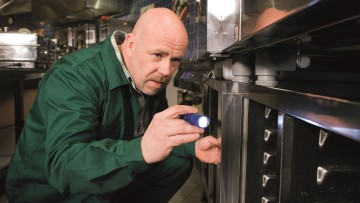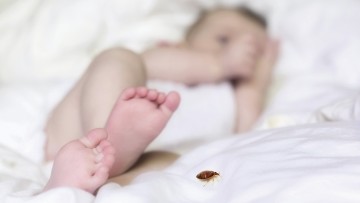Bed Bugs [Cimex lectularius]
Hard to find, persistent and increasingly pervasive, bed bugs require considerable professional expertise, client cooperation and effective solutions to eliminate.



Damages caused / challenges
- Currently, there is a major resurgence in bed bug problems, largely due to densely populated cities, extensive use of transport and increasing restrictions on residual insecticides.
- Bedbugs typically infest bedrooms but they also travel over great distances on clothing, luggage and furniture, in a wide range of premises including offices, schools, shops, cinemas and public transport.
- Bed bugs are notoriously difficult pests to control, especially as strains that show resistance to pyrethroid insecticides are widespread.
Profile
| Scientific name | Cimex lectularius/Cimicidae |
| Appearance | small (5-9mm), reddish-brown, flattened and wingless insects |
| Environment | Bedding typically, but also a large number of other items in a wide range of premises |
| Special features | Active mostly at night Shelter deep inside very narrow cracks and crevices |
| Reproduction | 3+ generations and females can lay up to 250 eggs each year |
| Diet | Blood |
How to control
Pest management strategy

This should be based around five key essentials:
1. Inspect to establish the extent and location of the infestation.
2. Prescribe the best treatment strategy for the particular situation.
3. Communicate to set the right expectations and gain sufficient cooperation.
4. Treat using the most effective products in the best and safest ways.
5. Follow-up to assess results and re-treat if necessary.
Locating the problem

Wherever bed bug infestations are suspected, a thorough inspection of all sites of activity and harbourage is crucial for treatment. A good torch and magnifying tool should be used to ensure that no bugs, eggs and faecal deposits are overlooked.
Key areas for inspection include:
- Tufts, seams, buttons & folds of mattresses
- Box springs, bed frames and covers
- Couches, chairs, cushions and curtains
- Window and door mouldings
- Behind loose wallpaper and pictures
- Cracks in walls or hardwood flooring
- Under carpets along walls (tack strip)
- Outlets & switch plates
- Luggage, boxes and other portable items
Inspectors should be alert for the typical bed bug odour. They must also be prepared to move and take apart items of furniture, look inside electrical fittings and lift carpets along their edges so that no potential harbourage sites are overlooked.
Adjoining rooms and other areas of the premises should also be inspected to establish the full extent of the infestation.
Preparing the ground
Clients need to be prepared for the fact that an initial bed bug treatment may take five hours or more and involve considerable disruption. In addition, repeat treatment is likely to be required for complete control.
They also need to be aware that the amount of treatment time will increase with the degree of clutter in the environment. Cooperation from clients and occupants is essential to successful, cost-effective treatment.
Laundry
- Beds must be completely stripped down before insecticide treatment with all sheets, duvets, blankets, valances and other bedding placed in a bin liner and either laundered or professionally cleaned
- Curtains, soft furnishings and any clothing that may provide potential harbourages should also be removed for thorough washing or dry cleaning
- To kill all bed bug stages, materials need to be washed in hot water (> 49º C for > 10 minutes) with soap or detergent before drying in a hot dryer (> 60º C for > 20minutes)
Vacuuming
- Vacuuming exposed surfaces or resting sites is a valuable first step in removing a significant number of nymphs and adult bed bugs
- Using a high efficiency particulate air (HEPA) filtered vacuum will ensure the many allergens associated with bed bugs and their debris are also removed
- Vacuum bags should be removed immediately, sealed tightly inside a plastic bag and either incinerated or placed in the normal rubbish collection
Additional considerations
Adjoining rooms must also be treated as bed bugs will move away from treated areas. Although not a statutory requirement, access to these areas should be restricted until the deposit is dry. As a rule, a one hour exclusion period should generally be sufficient.

